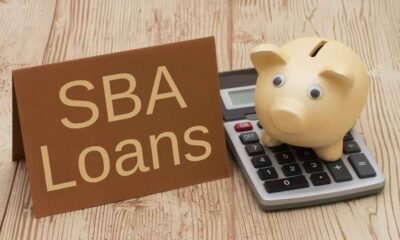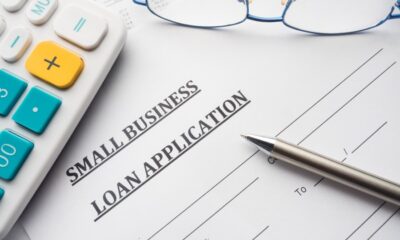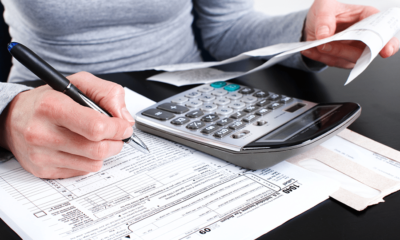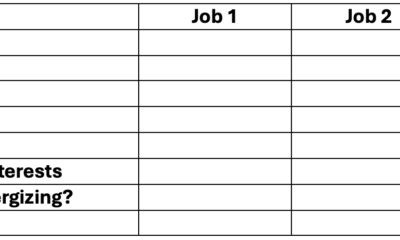Finance
Current SBA Loan Rates for January 2025

Small Business Administration (SBA) loans are still one of the more affordable financing options that offer favorable rates and terms to qualified borrowers. SBA loan interest rates are reviewed periodically and can vary depending on the type of SBA loan, the lender, and the required business qualifications. While these rates have been trending upward over the past few years, recent adjustments have since lowered current applicable rates.
Below is a chart showing the SBA current interest rates for the various programs available.
To learn about which SBA loan program is right for you, head over to our guide on the different types of SBA loans. Here, you can learn how the loans work, their required qualifications, and the specific loan terms—such as repayment terms, closing costs, and allowable uses of the loan proceeds—you can expect.
How SBA Loan Rates Are Determined
Various factors determine the interest rate of an SBA loan program; inclusive of loan terms, business qualifications, and the current base rate. Depending on the loan program, rates and terms can vary; however, the base rate is determined by one of several publicly available benchmarks.
Loan Terms
When considering SBA loan terms, factors can include the fixed or variable interest rate, the repayment term, and the requested loan amount.
Business Qualifications
Business qualification requirements will consist of criteria such as credit score, time in business, and business revenue. The stronger your qualifications within these criteria, the more likely you’ll be able to qualify for the best possible rates. When determining your odds of approval and what rate you’ll be eligible for, the following are areas of your business that are commonly considered:
– Credit score (personal and business): A credit score represents how likely you are to continue making timely loan payments.
– Debt service coverage ratio (DSCR): DSCR is calculated by dividing your company’s net operating income by the current year debt obligations.
– Time in business: Companies that have been operating for less than two years are classified as startups.
– Business revenue: Some lenders have minimum revenue requirements to even be considered for a loan.
– Business type: Some loans offer lower interest rates for nonprofit businesses versus for-profit companies.
Base Rate
Lenders can choose from one of several publicly available benchmarks to use as the base rate. These include the Prime Rate, Secured Overnight Financing Rate (SOFR), and the SBA’s price/earnings to growth (PEG) rate.
As of June 30, 2023, LIBOR will be replaced by the Secured Overnight Financing Rate (SOFR). LIBOR has been slowly phased out over the past several months. The one-week and two-month LIBOR rates were retired on Dec. 31, 2021, while the one-, three-, six-, and 12-month rates will be retired at the end of June.
SBA 7(a) Loan Rates
Although rates can vary among lenders, the SBA does have maximum rate limits that can be charged by a lender.
The maximum SBA loan rates for an SBA 7(a) loan can vary depending on the specific terms you’re looking to get. There are two main types of interest rates for SBA 7(a) loans: variable interest rates and fixed interest rates. Variable interest rates are subject to change based on market conditions, while fixed interest rates remain the same throughout the life of the loan.
SBA 7(a) Loan Uses
SBA 7(a) loans are versatile and can be used for a variety of business-related purposes. Some common uses of SBA 7(a) loan proceeds include purchasing equipment, real estate, refinancing existing debt, acquiring other businesses, financing working capital, and making site improvements.
SBA Express Loan Rates
SBA Express loans, which are part of the SBA 7(a) loan program, offer a faster approval process but typically come with higher interest rates. These loans allow lenders to use their own approval processes in exchange for a lower SBA guaranty percentage. SBA Express loans can provide up to $500,000 in funding with decisions made within 36 hours.
SBA Rates on CDC/504 Loans
An SBA 504 loan involves two separate loan structures: one from a bank and the other from a certified development company (CDC). The bank loan can have variable or fixed rates and typically covers up to 50% of the loan amount requested. The CDC portion of the loan provides the remaining funds at a fixed rate, often at a lower interest rate than the bank loan.
Rates are determined by the bank, but because this type of loan is secured by some form of real estate, rates are typically low to reflect the reduced level of risk to the bank.
CDC loan (fixed rate only): This portion is granted for up to 40% of the price of the land, equipment, or other real estate for which you need funding. The SBA does dictate the maximum interest rates that can be charged for this portion of the SBA 504 loan.
SBA 504 Loan Uses
SBA 504 loans tend to be more restrictive since they are only applicable to financing opportunities that will help create or promote job growth. Loan proceeds are usually provided for major fixed assets that are essential for business purposes. Some examples of what you can do with the proceeds from an SBA 504 loan are:
– Purchasing or building offices or land
– Acquisition of machinery or equipment
– Improving land, streets, utilities, and landscaping
– Renovating existing facilities
SBA Microloan Rates
Microloans associated with the SBA are best suited for businesses with limited funding needs and commonly have favorable rates and terms compared with microloans offered by other lenders. Interest rates for SBA microloans can vary but are generally anywhere from 8% to 13%. They also have a maximum repayment term of six years. They are offered through SBA-appointed intermediaries, and rates can vary depending on the lender.
SBA Microloan Uses
SBA microloans offer up to $50,000 in funding, although the SBA states that the average microloan is around $13,000. They can be used for a wide range of business purposes—with the exception of paying off existing debts and acquiring real estate. Some examples of what you can use an SBA microloan for are working capital, supplies, inventory, furniture and fixtures, and machinery and equipment.
SBA Economic Injury Disaster Loan (EIDL) Rates
SBA EIDLs are issued to businesses that have been affected by a natural disaster and are unable to get financing elsewhere. Loan rates are favorable and are meant to offer financing opportunities that support the rehabilitation of a business. Rates are not to exceed 4%, and loan amounts are based on the actual economic injury of your business, regardless of property damage.
SBA EIDL Uses
Funds can be used to pay for business-related expenses that you otherwise would have been able to cover prior to a disaster. Some examples include payroll expenses, healthcare benefits, rent and utilities, debt payments, and equipment repairs.
-

 Professional Development1 month ago
Professional Development1 month agoDrawing up your strategy
-

 Personal Growth2 months ago
Personal Growth2 months agoSucceeding as a ‘parentpreneur’: Top tips
-

 Videos2 months ago
Videos2 months agoGreat Leaders INSPIRE Others To Do Great Things
-

 Productivity1 month ago
Productivity1 month agoHow to Increase Remote Work Productivity
-

 Productivity2 months ago
Productivity2 months agoTips for Boosting Work Productivity
-

 Productivity2 months ago
Productivity2 months ago5 Ways to Increase Your Personal Assistant’s Productivity
-

 Leadership1 month ago
Leadership1 month agoHow to Tackle Big Challenges
-
Leadership1 month ago
Cutting Through the Clutter of Internal Communications
